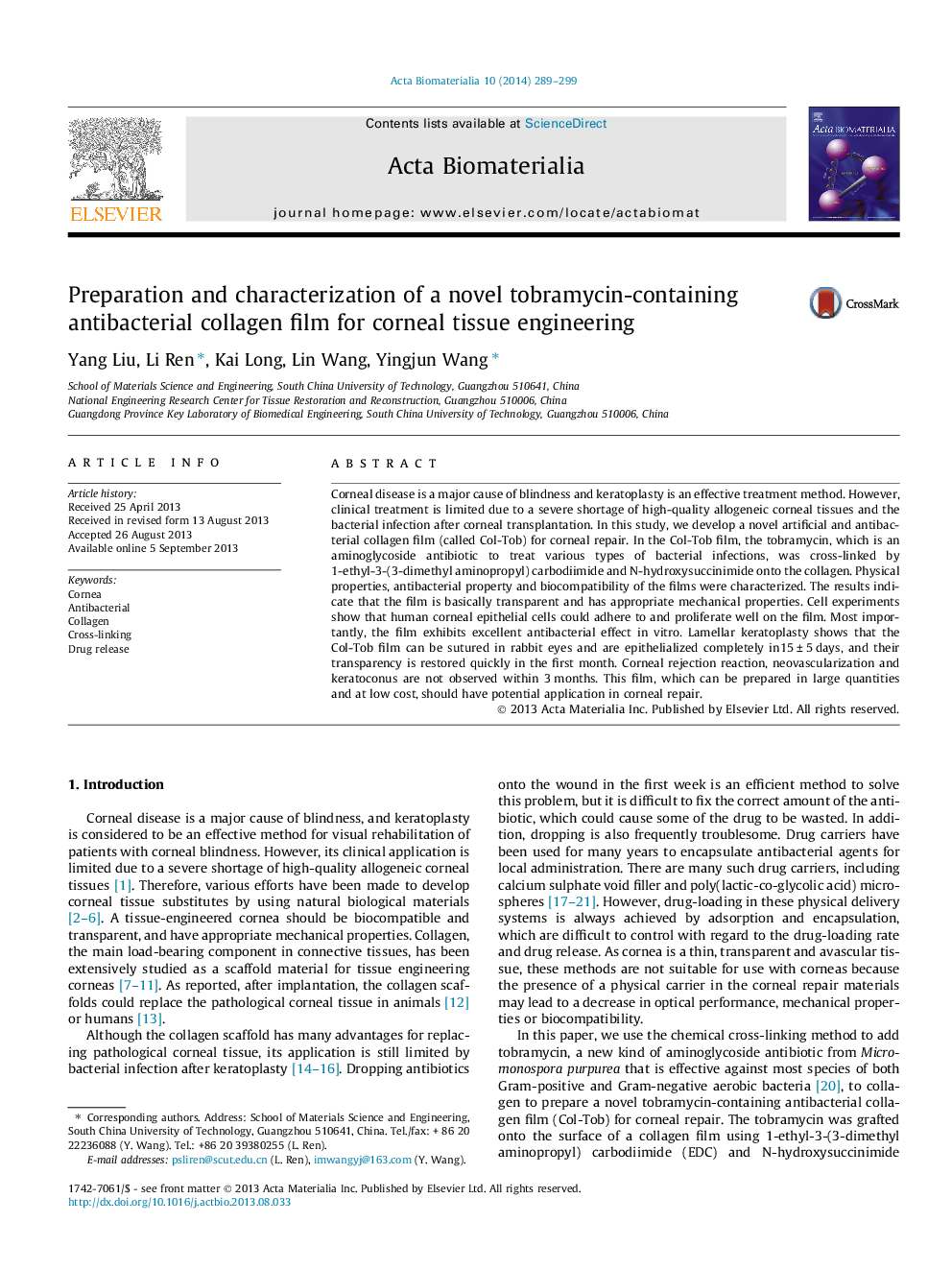| Article ID | Journal | Published Year | Pages | File Type |
|---|---|---|---|---|
| 10159419 | Acta Biomaterialia | 2014 | 11 Pages |
Abstract
Corneal disease is a major cause of blindness and keratoplasty is an effective treatment method. However, clinical treatment is limited due to a severe shortage of high-quality allogeneic corneal tissues and the bacterial infection after corneal transplantation. In this study, we develop a novel artificial and antibacterial collagen film (called Col-Tob) for corneal repair. In the Col-Tob film, the tobramycin, which is an aminoglycoside antibiotic to treat various types of bacterial infections, was cross-linked by 1-ethyl-3-(3-dimethyl aminopropyl) carbodiimide and N-hydroxysuccinimide onto the collagen. Physical properties, antibacterial property and biocompatibility of the films were characterized. The results indicate that the film is basically transparent and has appropriate mechanical properties. Cell experiments show that human corneal epithelial cells could adhere to and proliferate well on the film. Most importantly, the film exhibits excellent antibacterial effect in vitro. Lamellar keratoplasty shows that the Col-Tob film can be sutured in rabbit eyes and are epithelialized completely in15 ± 5 days, and their transparency is restored quickly in the first month. Corneal rejection reaction, neovascularization and keratoconus are not observed within 3 months. This film, which can be prepared in large quantities and at low cost, should have potential application in corneal repair.
Related Topics
Physical Sciences and Engineering
Chemical Engineering
Bioengineering
Authors
Yang Liu, Li Ren, Kai Long, Lin Wang, Yingjun Wang,
